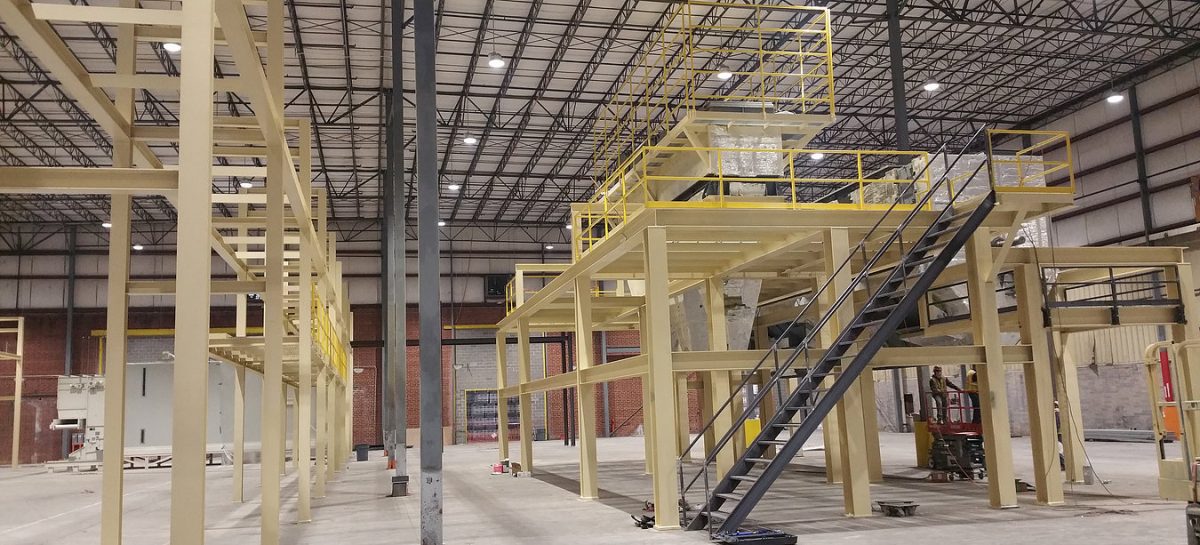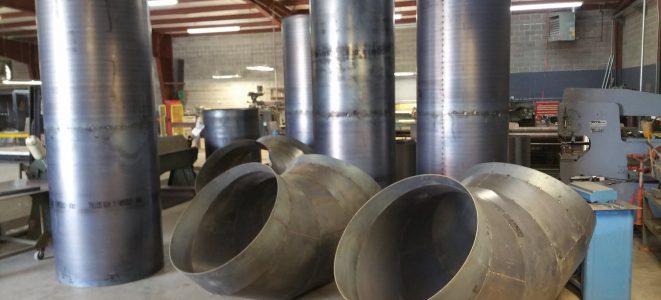CAD Software for Metal Fabrication That Helps You Win at the Bid Stage & Expedite Production
May 8, 2019 |

CAD software for metal fabrication needs to be able to facilitate the production process, but how many 3D CAD platforms also help speed up the sales process, which some might consider even more important? More often than not, even the most skilled CAD user on a traditional CAD platform can’t move fast enough for salespeople or customers who often present “I needed this yesterday” scenarios.
Mechanical contractor Weems M&E in Dalton, Georgia, has found the CAD software solution for speeding up the bidding process, producing more accurate bids, and winning customers: IronCAD. “We can literally draw a tank in five minutes,” says Jordan Allen, Engineer at Weems M&E. “It’s a quick turnaround. It’s really helpful.”
Not only that, IronCAD lets Weems estimators produce solid drawings during the bidding process so they can derive accurate labor quotes. And IronCAD will automatically generate Bills of Materials (BOM), which can be cross-referenced against existing stock levels for pricing and to factor in time for material resource planning. The overall result with IronCAD is faster, more accurate bids.
So how exactly does Weems use this revolutionary CAD software for metal fabrication bidding? Here are a few use cases — as well as some ways Weems leverages IronCAD to improve downstream design and production processes.
How IronCAD Improves the Bidding Process
As is the case for many estimators at mechanical contractors, Jordan receives RFQs with differing parameters all the time. Not only are they for different types and sizes of products, they also have different requirements. He needs dynamic CAD software for metal fabrication that will support all the different variables that may come up during the bidding process. Here are four ways he uses IronCAD to keep a handle on everything:
1. Responding to formal RFQs that require drawings.
Some bid requests require drawings. Sometimes these are in response to a list of specifications. Or, there may be a 2D drawing included in an RFQ that needs to be rebuilt in 3D to produce an accurate quote.
2. Projecting more accurate labor costs.
The more accurate a drawing, the more accurate any estimation on associated labors costs. IronCAD can quickly take a 3D drawing and export it as 2D shop drawings so that all the necessary cuts can be specified. The cost of performing those production steps can then be incorporated into the bid.
3. Specifying materials costs reliably.
IronCAD automatically generates a BOM based off of a 3D model. This information can be fed to an MRP so that actual materials costs can be factored into the bid. It also helps the materials department anticipate what will need to be ordered when, assuming the job gets booked. This helps reduce over-ordering.
4. Reusing previous designs.
If a metal fabrication company does a lot of custom work for similar types of products (e.g., tanks, catwalks), they inevitable reuse designs or refer to past designs to generate quotes. Often, though, these analogies result in ballpark estimates, or it takes a significant amount of time to adjust past designs to suit current specifics. IronCAD’s customizable Catalogs overcomes both of these shortcomings by giving metal fabricators the ability to modify old files quickly and easily using squash-and-stretch functionality. “There’s nothing like this anywhere else,” says Jordan. “It’s a game changer for us.”
Downstream Production Benefits of IronCAD
Like many estimators at metal fabrication companies, Jordan is also an engineer and a project manager. He not only needs to get bids out; he also has to anticipate what will happen if a job is won. Here are some of the IronCAD functions he exploits to expedite jobs once they get into the Weems design and production queue.
1. Responding to field measurements.
Every metal fabricator knows that field measurements can change everything on a custom job. Making changes in response to on-the-ground conditions can be a pain when you use a constraint-based CAD system. But with IronCAD, it’s easy to make quick alterations in response to real-world conditions thanks to its unified design environment, which doesn’t impose any constraints.
2. Modifying large assemblies.
As with changes necessitated by field measurements, it’s often a pain to alter a large assembly with a constraint-based CAD system. Lots of files need to be adjusted and then re-linked to make sure they fit together properly. IronCAD’s unified design environment eliminates this sense of everything being locked together by letting users work in one file where things can be seamlessly squashed and stretched to fit modified specifications. “With IronCAD, you don’t need to worry,” says Jordan. “You can just move it. You don’t have to figure out what’s connected to what.”
3. Importing and exporting various file formats.
Design and engineering workflows often involve stakeholders who use different types of CAD software for metal fabrication projects. Being able to trade files back and forth across platforms without losing any data integrity is crucial. IronCAD does this seamlessly. “I know people who have bought IronCAD just for its Translators,” says RJ Saucier of Genesis Technology Systems in Ringgold, Georgia, which works closely with Weems on various engineering projects. “One guy I know had Inventor files that he couldn’t get to work with Revit, which is another Autodesk product! His workaround was to import Inventor files into IronCAD and then export them to import into Revit.”
4. Securing approvals.
When you’re working iteratively with customers, as is often the case with custom metal fabrication projects, the customer exerts approval. And they often want to see drawings to sign off (98% of the time, according to Jordan). Getting approval can take a few rounds of revisions, which means that versions of drawings documenting design changes need to be produced. IronCAD’s ability to support quick changes to an assembly — no matter how big — is crucial for expediting the approval process, which instills confidence in the customer.
5. Generating cut sheets for production.
Based off of a 3D model, IronCAD can auto-generate 2D drawings, which expedites the detailing process. With cut sheets in hand, there’s less ambiguity when the engineer passes things to the detailer — and less time spent explaining everything.

CAD Software for Metal Fabrication That Grows on You
Jordan had used other CAD software for metal fabrication projects, such as AutoCAD and SolidWorks, for years before he adopted IronCAD. He’d heard about IronCAD, mainly via the persistent recommendation of RJ at Genesis, but “it just wasn’t something I had grown up using,” he says.
Then one day, RJ blew him away with IronCAD. “We had to get a quote out to a customer really fast,” recalls Jordan. “I told him the parameters, went to the bathroom and came back, and it was done.”
From that moment on, Jordan committed himself to learning IronCAD, which he now recommends as his CAD software for metal fabrication of choice. “It’s more fluid and flows better than any platform I’ve seen,” he says. “The more you use it, the better it is.”
Are you a metal fabricator that needs a better CAD software solution for expediting your bidding process? See how IronCAD performs for yourself with a free online trial.
